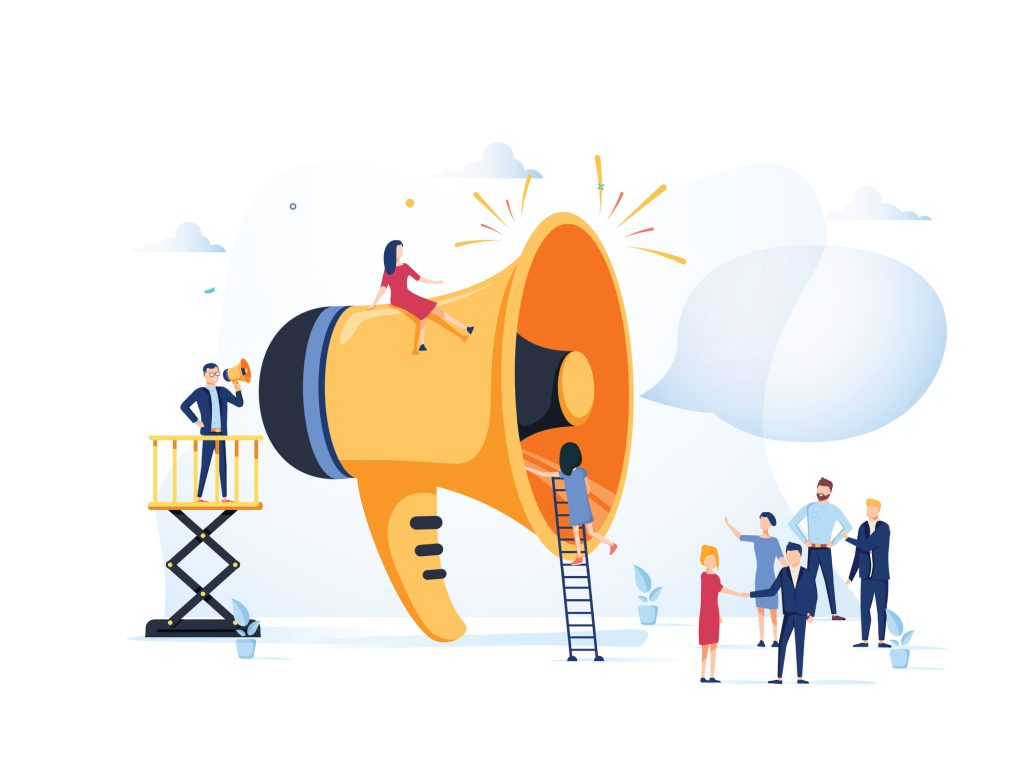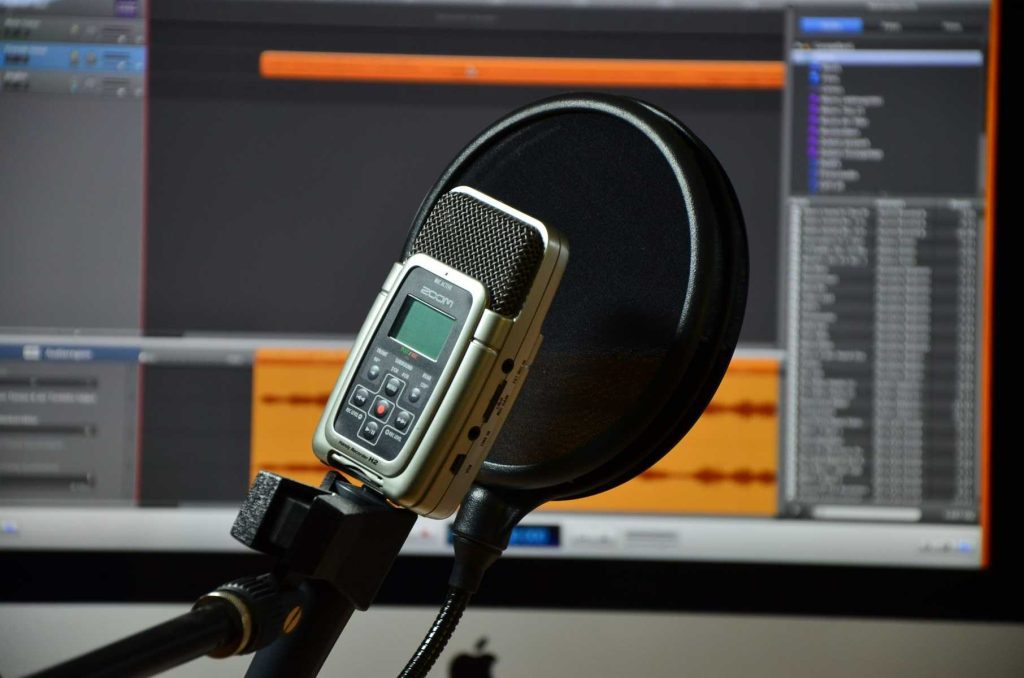The world’s most prominent music streaming platform, Spotify, recently announced that it has 182 million subscribers. Meanwhile, more than 420 million people tune into Spotify at least once a month. Spotify’s global domination points to an interesting fact: audio content is not dead. Like the rest of the world’s content, audio has just gone digital. And that is exactly why digital audio marketing is so important.
Digital audio allows consumers to multitask by accessing content on the go. And advertising across the various audio channels and platforms can be a great way to up your digital marketing strategy.
Want to know more about what digital audio is and how to advertise utilizing audio? Then keep reading our beginner’s guide for absolutely everything you need to know.
What Is Digital Audio?
Digital audio is a term referring to any sound stored digitally. You can store sound digitally on a hard drive. Or you can store it on a smart device, website, or online streaming platform.
In addition to Spotify, some of the most popular digital audio platforms you need to know about today include:
- Apple Music
- iHeartRadio
- Pandora
- Amazon Music
- Sirius XM
- NPR
- Sound Cloud
- YouTube Music
- Audible
These audio platforms deliver different types of content. For instance, iHeartRadio and Pandora specialize in music content, while Spotify and NPR also provide access to podcasts and talk shows. Audible is different from all of these providers because it publishes digital audiobooks.

Digital Audio Options
Anything you listen to over the internet is digital audio. However, some types are more listened to than others, presenting more targeted ad opportunities. Below are the three primary types of digital audio.
Downloaded Audio
Downloaded audio presents the least lucrative advertising opportunity. That is because users download this type of audio content onto their devices. Songs, podcasts, and audiobooks can all be downloaded without ads.
Live Streaming Audio
Live streaming audio includes radio station broadcasts and live talk platforms. Like traditional radio, this type of audio content includes ad breaks where you can market your products and/or services.
On-Demand Audio
On-demand audio is a fast-growing segment of the digital audio market. It includes content like music, podcasts, talk shows, radio, and audio clips. Listeners access this type of content via platforms like Spotify and Apple Music.
Digital Audio Advertising: Explained
As mentioned, businesses can serve ads to consumers via digital audio platforms. For instance, Spotify allows businesses to purchase music and podcast content ad spots of 30 to 60 seconds.

Audio ads are similar in nature to video ads. If you need a refresher, here are the types of digital marketing ad options available.
Pre-Roll Audio Ads
Pre-roll audio ads play before the podcast or song. You can usually buy these ads in 15 to 60-second increments.
Mid-Roll Audio Ads
Mid-roll ads play during the audio content. Like pre-roll ads, they can be 15, 30, or even 60 seconds long.
Post-Roll Audio Ads
Post-roll audio ads play after the content ends. They are of the same length as pre- and mid-roll ads. However, this option can be risky because the listener can click off of the content before hearing your advertisement.
Audio Ad Sequences
Audio ad sequences are to audio marketing what content funnels are to traditional digital marketing strategies. These ad sequences warm up your audience, spreading brand awareness and utilizing calls to action.
Skippable Ads
Like video ads, you can make your audio advertisements skippable. Yet, with 65% of people skipping online ads, why should you take the risk?
First of all, you only have to pay for a skippable ad spot if someone watches 30 seconds of it. What’re more, studies show that aided recall increases by 22% among people who skip online ads.
That means that even if people are not watching your ad to the end, you can get the benefits without paying a dime.
The Benefits of Digital Audio Advertising
By now, you may be wondering: do digital audio ads really work? Yes! Below, we are talking about exactly how audio content can boost your digital marketing strategy.

Reach a Broad Audience
62% of US adults report consuming digital audio at least once per week. That means you can reach an incredible 176 million people with your digital audio advertisements.
Further, the average digital audio consumer listens to more than 16 hours of content per week. And these listeners are not just consuming audio alone. 50% of listeners say they consume digital audio with a friend or family member.
Grab Attention and Make Conversions
Listening to audio and watching video content on smart devices increases consumers’ receptivity to advertisements. In fact, according to Amazon’s 2021 Connected Audio Consumers study, 38% of people say they watch ads when they come across their smart device.
And these consumers are not just paying attention; they are converting, too. 29% of people who listen to ads on their smartphones make a subsequent purchase. And this is an 11% increase over people who consume non-audio ads.
Harness the Benefits of Interactivity
Unlike TV or radio ads, hearing audio ads on a smart device means target customers can interact with the product you are advertising directly. Gone are the barriers of having to search for your business online or in a directory.
Instead, consumers can click on the ad and learn more about your brand and offering. This quality of audio ads can move consumers down your marketing funnel faster as well as speed up the purchasing process.
Digital Audio Marketing Trends
Still not convinced that digital audio advertising is critical for your digital marketing strategy? Then consider this: digital ads are not only relevant now; their relevance is growing.
Here are just a few of the trends driving the importance of digital audio marketing in 2022.
Digital Audio Growth
Of all the digital media channels, audio is currently experiencing the most growth. Consider the following stats:
- Digital audio listening increased by 9.2% from 2019 to 2020 and is projected to increase another 4.8% between now and 2024
- US adults spend 13 more minutes per day listening to digital audio than watching subscription TV
- US adults spend 25 more minutes listening to audio per day than on social media
- US adults spend 60 minutes more per day listening to audio than watching videos
- Digital audio takes up 20.3% of total digital media time
- Digital audio receives 10% more listening time than traditional radio
As you can see, the popularity of digital audio is not only overtaking traditional listening channels. The ability to multitask while listening to audio content is helping this option overtake video, TV, and even social media marketing.
Smart Speaker Uptake
It is no secret that the majority of US citizens aged 12 and over have a smartphone. In fact, 88% of people report owning a smartphone. And in 2021, 51% of people said they owned one or more tablets.
Smart speakers are a relatively new invention in the connected device universe. Yet, these devices are prime candidates for digital audio marketing ideas since they exclusively serve audio content.
And like smart device ownership, smart speaker uptake is on the rise. Smart speaker ownership has increased by 26% since 2017. Today, 33% of US citizens aged older than 12 years own one or more smart speakers.
An Affluent Demographic
Audio ads serve a prime US demographic: young and affluent people. The age demographic of digital audio consumers lean toward millennials. It is the 35 to the 44-year-old age group that consumes the most audio content.
The good news about this age group is that studies show that adults aged 35–54 have the highest expenditure of any age group. They also tend to have the highest income levels compared to younger and older adults.
For example, the Bureau of Labor Statistics shows that adults aged 35–44 make $78,000 per year. At the same time, they spend about 77% of that income on goods and services. And 29% of people in this age demographic purchase something online at least once per day.
Boost Your Content Strategy With Audio Content Marketing
Digital audio is the next big thing in content marketing. You can serve high-impact advertisements across music, podcasting, and radio streaming platforms. And this opportunity is only going to increase going forward.
Are you looking for help with your audio content marketing strategy? Elite Digital is an award-winning digital marketing agency that knows cutting-edge strategies like audio advertising. Contact us today to get started!
